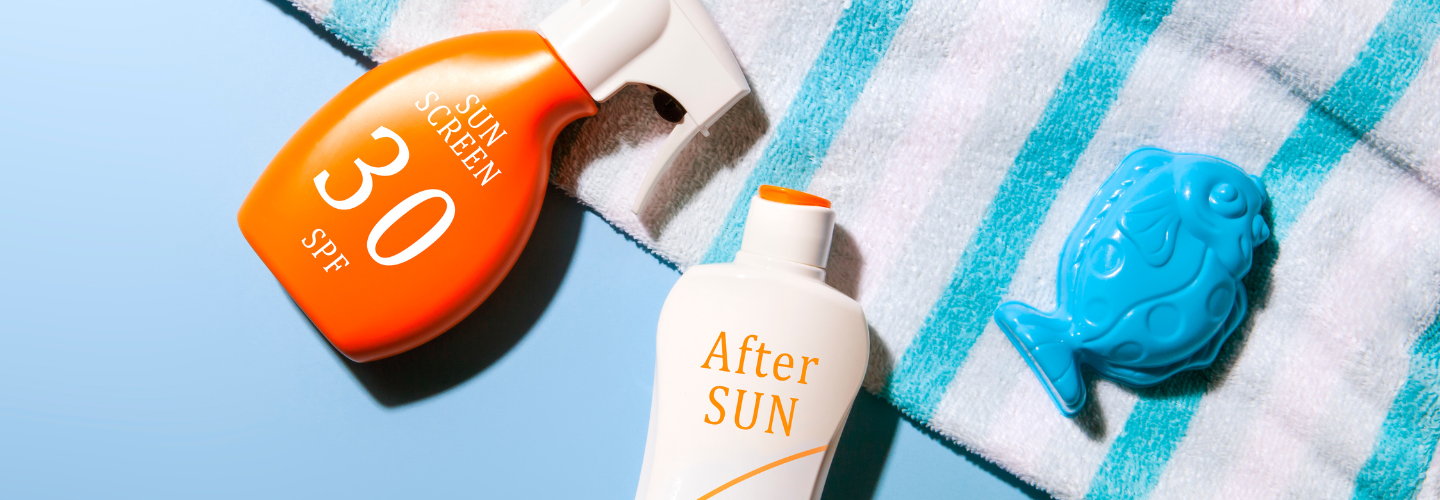There are unavoidable instances where we mistake one thing for another, or even assume that one thing does exactly the same as the other. This is especially when looking at sunscreen and sunblock. As both are obviously labeled slightly different from each other, with it comes the variation of formulation, the ingredients, and the effects of each product. But how is using sunscreen and sunblock beneficial?
Importance of using sunscreen or sunblock
The harmful UV rays from the sun can cause a wide range of skin problems like, sunburn, premature aging of the skin, giving way for wrinkles, leathery skin, melasma, or in severe cases, skin cancer. Both sunscreen and sunblock offer excellent forms of sun protection, with each having different methods of doing so. Someone might feel the urge to go out for a walk, or get a tan on the beach, using sunscreen or sunblock on the skin is beneficial, but are not always advised to use one over the other.
SPF and UV Rays
SPF or Sun Protection Factor is basically a measurement of how well a sunscreen or a sunblock, offers protection from harmful UV rays, specifically the UVB rays which is the main cause of sunburn and skin cancer. The advisable amount of SPF when spending ample time outdoors is around SPF 60 or greater.
Aside from UVB rays, there are also other types of UV rays, and this is based on their wavelengths. These types are divided into three bands:
UVA: UVA rays have the least energy and have relatively long wavelengths that reaches the earth’s surface and can penetrate deep into the skin which causes the tanning of the skin. UVA rays are also linked to effects such as skin damage, wrinkles, and also play a role in causing skin cancer.
UVB: UVB rays have slightly stronger energy than UVA rays and can damage the DNA of skin cells. UVB penetration on the skin can also cause sunburn and other similar UVA damages on the skin. Most sunscreens and sunblocks only filter out or protect the skin from UVB rays, so products that are broad spectrum sunscreens work best when looking for both UVA and UVB ray protection.
UVC: UVC rays have the most energy out of the three types and are the most damaging type of UV ray. However, they are completely filtered in our atmosphere and will not reach the earth’s surface. They do not typically cause harm or risks in skin damages.
Sunscreen vs Sunblock for Face: Which sun protection is better?
Both types of products are known to work in the same way - provide protection to the skin against UV rays. The main difference lies in their ingredients that allows them to work their magic in their own way. Choosing which works best—sunscreen vs sunblock for face and skin, depends on the need. Although most dermatologists suggest using sunblocks, as these usually do not have chemical ingredients that may cause allergic reactions to some individuals.
Sunscreen: Sunscreens are often referred to as chemical sunscreen, as the main ingredients usually include oxybenzone and avobenzone. These chemicals work by absorbing and filtering the harmful UV rays from the sun before it can penetrate the skin.
Sunblock: While sunscreens absorb the sun’s rays, the mineral ingredients found in sunblock, like titanium oxide and zinc oxide, work by physically blocking and reflecting the UV rays, quite literally. These ingredients make the formulation thicker and feel heavier on the skin compared to sunscreens.
Sunscreens are generally formulated to protect the skin from UVA rays which causes premature aging and other skin damage. Sunblocks on the other hand were made to block the damages caused by UVB rays. Although, there are already numerous sunscreen and sunblock products that include both UVA and UVB protection.
Sunscreens and sunblocks are needed to be topically applied on the skin 15 minutes before sun exposure and are needed to be reapplied every 2 hours for maximum protection. Both products also have different ways of application, and the main reason for this is because of these ingredients. While sunscreen needs to be rubbed in, as it will only work when it is absorbed by the skin, sunblock can be simply lathered on the skin, since it will perform as a physical protection. Both products also need to be applied evenly and should be thick enough to do its magic. Applying too little will decrease its effectiveness, so applying a thick layer of sunscreen or sunblock will ensure proper SPF value.
The choice of which one to use ultimately depends on your personal preferences and needs. It is also important to take into consideration if you are sensitive to any ingredients of the two different
formulations. However, one thing is for sure - whichever of the two you will use, you are guaranteed protection from the harmful rays of the sun.
References
-
Chien, A.L. (n.d.). Sunscreen and Your Morning Routine. Johns Hopkins Medicine. Retrieved from https://www.hopkinsmedicine.org/health/wellness-and-prevention/sunscreen-and-your-morning-routine
-
Gillespie, C. (2020). Sunscreen vs. Sunblock: What's the Difference, and Which One Is Better? Retrieved from https://www.health.com/beauty/skincare/sunscreen-vs-sunblock
-
Radiation: Ultraviolet (UV) radiation. (2016). World Health Organization (WHO). Retrieved from https://www.who.int/news-room/questions-and-answers/item/radiation-ultraviolet-(uv)
-
Sunblock vs Sunscreen: What's the Difference? (2022). Verywell Health. Retrieved from https://www.verywellhealth.com/sunscreen-or-sunblock-514381
-
Ultraviolet (UV) Radiation. (2019). American Cancer Society. Retrieved from https://www.cancer.org/healthy/cancer-causes/radiation-exposure/uv-radiation.html



